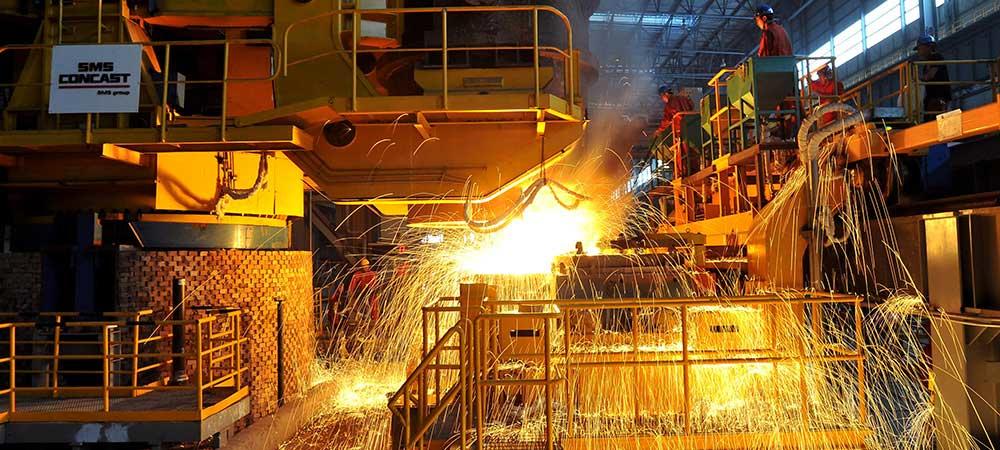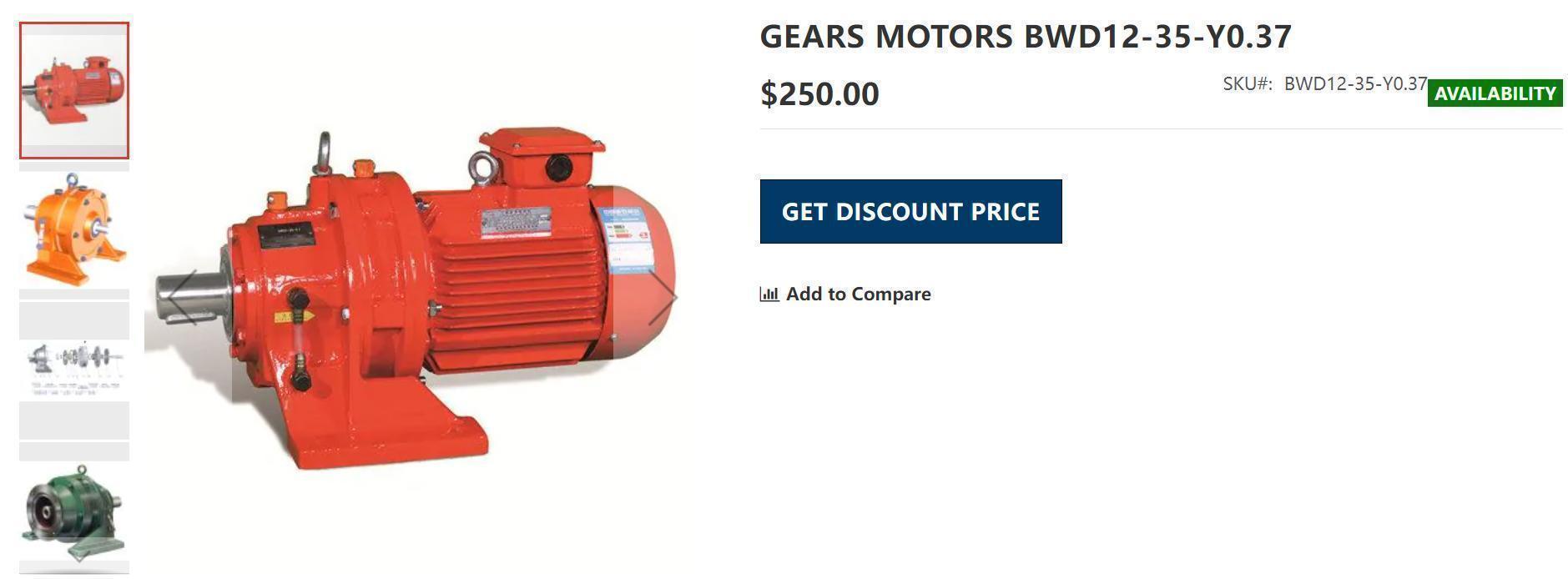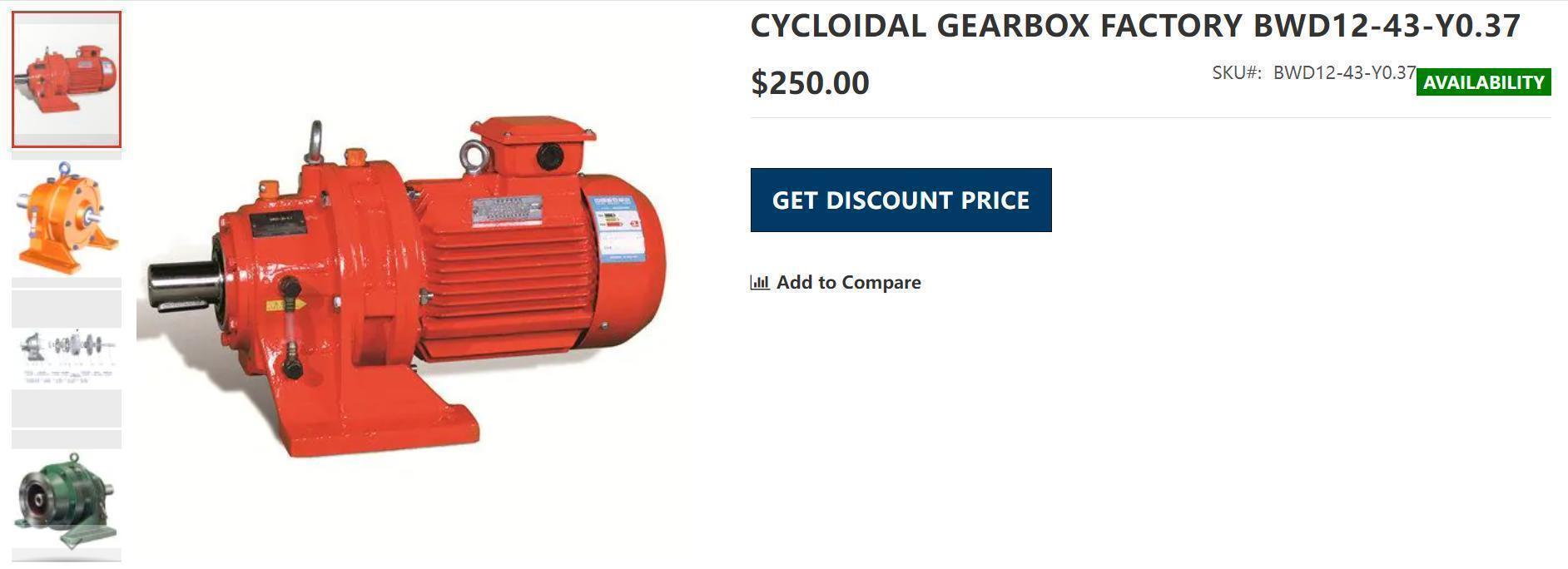At present, the most common automatic transmissions on the market are mainly the following four types: 1. AT gearbox, known as hydraulic automatic gearbox, is the most automatic type of gearbox we have contacted. From the 4AT gearbox that we touched in the early days, some cars are equipped with 9AT gearbox, AT gearbox The advantages are obvious, the power is "more direct", the disadvantages are more prominent, the sense of frustration during acceleration, and the fuel consumption is relatively high. 2, CVT gearbox, known as mechanical stepless automatic gearbox, mainly represented by Japanese cars, Honda and Nissan models mostly use CVT gearbox. The characteristics of the CVT gearbox are obvious. Because the gear ratio is not a discontinuous point, but a series of continuous values, the ride performance is very good, and the fuel economy is also prominent, but the disadvantages are relatively obvious, that is, the moment of power. The output lacks a burst point and is relatively gentle.
3, AMT gearbox, the abbreviation of electronically controlled mechanical automatic gearbox, AMT gearbox is a compromise between MT gearbox and AT gearbox. The advantage is that the production cost is relatively low, and the operation is more convenient than the manual gearbox. However, the shortcomings of the AMT gearbox are more prominent. It is easy to have a strong sense of frustration when operating poorly, which greatly affects comfort. Moreover, there are fewer models equipped with AMT gearboxes on the market.
4, dual clutch transmission referred to as DCT, double clutch as the name suggests is to use two sets of clutches, through the interaction of the two sets of clutches to reach the effect of gapless shifting, and is divided into dry double clutch, and wet double clutch, double clutch The transmission has a fast shifting speed, small power loss during shifting, and good fuel economy performance. The disadvantages of the dual-clutch gearbox are more obvious, and the stability of the quality is a major drawback of the dual clutch.

The gearbox is actually the gear mentioned in our civilian vehicles. Its working principle is more complicated. The principle of the gearbox: Since the development of the gearbox, there have been manual gear shifting and automatic gear shifting design. Among them, the self-displacement gearbox has developed a stepless shifting system or a manual shifting system. However, they all have the same function: (1) The output power of the transfer engine (2) can change the combination of gears to meet different needs
Now let's look at the basic structure of the handgrip gearbox: the gearbox input shaft passes through the clutch, and the gearbox input shaft is connected to the crankshaft of the engine. Its function is to input the power of the engine. The gearbox output shaft gearbox output shaft is directly connected to the vehicle's transmission for power output. The gear mechanism This mechanism is the function of the entire gearbox. It is the place of various gears. The gearbox operation is achieved by different combinations. The purpose of the synchronizer synchronizer is to help the shifting gears to snap into position and ensure smooth shifting of the gearbox. In fact, the gearbox is a very high-precision and complicated machine. Until today, most of the car manufacturers do not produce gearboxes themselves. Maybe you don't believe it, but these car manufacturers are handed over to companies specializing in gearbox design. Production, whether it is hand row, self-discharge, or hand-self-discharge gearbox, there are well-known companies in the company, such as the world-famous German ZF, M-Benz all-car system adopts the company's shifting box. Clutch clutches are devices that engage or disengage power transmission. The hand-gear transmission uses a "friction disc clutch" that uses the friction of the friction plate to generate torque to transmit power.
The manual transmission is the most traditional and oldest gearbox. It has the characteristics of simple structure, low cost, high transmission efficiency and high reliability. Although it is relatively complicated to operate, it is still favored by consumers who love to control it. The manual transmission has the advantage of high transmission efficiency, but its advantage is only based on the driver's good driving skills. If the driver lacks driving skills, the manual transmission may not be as fuel efficient as the automatic transmission.
ordinary automatic gearbox The ordinary automatic transmission is a transmission type commonly used in automatic transmissions at present, and its abbreviation AT is almost synonymous with automatic transmission. Compared with the manual gear, the ordinary automatic transmission is very different in structure and use. The ordinary automatic transmission achieves the purpose of shifting by means of hydraulic transmission and gear combination. For the driver, it is only necessary to step on the pedal with different strengths, and the gearbox can automatically raise and lower the gear.
Industrial gear oils and transmission oils have many different working conditions. In general, industrial gear oils are more demanding than transmission oils, so industrial gear oils are more demanding than transmission oils in many performance requirements: 1. The industrial gear oil satisfies the lubrication of components with large torque, and the gearbox generally has low requirements on the extreme pressure performance; 2. The anti-emulsification performance of industrial gear oil is stronger than that of transmission oil. A small amount of water will not affect the use of industrial gear oil. Transmission oil will not work. A small amount of water will emulsifie and reduce the lubricating effect of oil. 3. The anti-foaming and air separation requirements of industrial gear oils are also higher than that of transmission oils;

Why are there so few automatic transmissions that we independently developed? 1. High technology! All patents for automatic transmissions are monopolized by giants such as Aisin, ZF, BorgWarner and Gycott, and it is too difficult to break down professional barriers. There are AT, DCT, CVT, AMT, etc. in the form of automatic transmission light products. Even if you specialize in one of them, the structural differences are very big. For example, DCT has the distinction of dry and wet, and the motor is driven by hydraulic power. The fork is still used to change the drum, how to arrange the gears and so on. In addition, the development of gearboxes not only requires production technology, but also requires huge amounts of data to adjust a reasonable product, but this part of the data requires a lot of time to accumulate.
2. High price! The investment and output of the development of the gearbox is really not proportional. Some of the mainframe factories with small output and many models have even led to bankruptcy. Even a large company like Chery or Geely is constantly acquiring and reorganizing because of the problem of gearboxes.
3. High market risk! The development cycle of an automatic transmission is disproportionate to its life cycle. Automatic gearboxes must be re-developed with a full set of hardware and software to add a gear. If you don't grasp the direction in the early stage of the project, after the long development cycle, even if the product comes out, it is likely to have lost competitiveness in the ever-changing market. In addition, the gearbox is a component that moves all over the body. Jitter, shifting, stuck, skipping, hanging up, etc. may be just because the calibration of a data is not mature, but the consequences are very serious, such as the recent disintegration of the GS4 is under pressure The previous 7-speed dry dual clutch was replaced by the current 6AT gearbox.
However, relying on foreign technology or pure import is very risky. In the past, when independent brands such as Jianghuai, Chang'an, Great Wall and Chuanqi purchased automatic transmissions from multinational companies, they all suffered “price increases” and “limited amounts”, resulting in some The production of the welcome brand-name model is “card neck”. In this passive situation, some enterprises have finally embarked on the road of research and development of automatic transmissions.
The automotive electronically controlled mechanical automatic transmission AMT system is equipped with an electronically controlled hydraulic operating system on the conventional manual transmission and clutch to achieve the purpose of automatically switching gear positions. In fact, the manual transmission, that is, the original mechanical transmission (MT), is equipped with a microcomputer-controlled automatic control system to change the original manual operating system. Therefore, AMT is actually a robot system to complete the two actions of operating the clutch and gear selection. The core technology is the microcomputer system. The electronic technology and quality will directly determine the performance and operation quality of the AMT. The AMT car no longer requires a clutch pedal, and the driver can start and drive the car very simply by simply stepping on the accelerator pedal.
The AMT car is easy to drive, the driver only needs to step on the gas pedal, and the AMT system will automatically choose the best time to shift gears, thus eliminating the wrong use of the engine, clutch and gearbox, avoiding the wrong gear, which is new to the driver. And the reliability of the vehicle is very important. The Mechanical Automatic Transmission (AMT) is a new type of transmission that electronically controls the conventional dry clutch and manual gear transmission to achieve automatic shifting. The control process is basically to simulate the driver's operation.
Whether it is AcMT or AMT, it improves the drivability under the condition of maintaining the high efficiency of the original manual transmission, which makes the original manual transmission greatly enhance the value. Although the shifting comfort of the current products is still inferior to the traditional automatic transmission (AT), the transmission efficiency is similar to that of the MT, which is more than 7% higher than the conventional automatic transmission, and the production cost is 30% lower than the AT.
Because of these advantages, AMT has risen in the European market since the mid-1990s. In 2000, it began to spread to the United States and Japan. Some auto manufacturers such as Eaton, GM, and Japan began to invest in product development. Before 1995, the automatic transmission was only available for AT and CVT. Now there are more choices for AcMT and AMT, and the growth rate of AMT has far exceeded CVT. It is expected that AMT products will account for the European transmission market by 2010. Up to 25% market share.
The generalized AMT includes the following types: Auto-clutch Manual Transmission (AcMT), Single Clutch Automated Manual Transmission (AMT), and Dual Clutch Automatic Transmission (Dual Clutch). Automated Manual Transmission (DCT) is basically a parallel shaft gear shifting structure, which has the same features in design technology or production technology.
In the 1980s, due to the rapid development of the electronics industry, the clutch automation technology of manual transmissions has made breakthrough progress. By the early 1990s, there were several cars with manual transmissions using automatic clutches.

For cars, the engine and gearbox are the most important core components. If the current self-owned brand engine has a certain substitution for foreign brands, then the gearbox field is another scene: more and more automatic cars, but China has not been able to independently develop production and market applications in automatic transmissions. Achieving a qualitative breakthrough, about 95% of the more than 10 million auto-sold cars sold in China each year are equipped with foreign-brand automatic transmissions.
Experts believe that the automatic transmission is undoubtedly the biggest "pain" of the Chinese auto industry. It should learn from the development and production of new energy vehicles.
It is understood that the common automatic transmission can be divided into: hydraulic automatic transmission (AT), mechanical stepless automatic transmission (CVT), electronically controlled mechanical automatic transmission (AMT) and dual clutch automatic transmission (DCT). Compared with the manual gear, the automatic car is more convenient to drive and more comfortable to sit on. At the same time, the advanced engine and automatic transmission combination has high fuel economy. In Europe and the United States, even heavy-duty trucks are generally equipped with automatic transmissions.
China is the world's largest auto market. In 2015, China's auto production and sales exceeded 24 million units. It is estimated that the current automatic transmission accounts for about half of the country's total annual sales of automobiles, and the transmission of more than 10 million automatic transmission vehicles is almost monopolized by multinational companies such as Japan Aisin, ZF, and BorgWarner, or Produced locally for foreign investment, or purely imported. The domestic auto-transmission capacity is only about 500,000 units.
“The automatic transmission is the most painful place in the Chinese auto industry.”Expertssaid that due to the large investment in independent R&D, slow effect and high risk, many domestic auto companies have chosen the “realism” road, that is, the purchase of ready-made foreign brands automatically. The gearbox has become dependent on foreign countries and abandoned itself for a long time. To this end, China has to spend 30 to 50 billion yuan a year to import automatic transmissions.
In China, there are very few companies that have long insisted on self-developed automatic transmissions. After several years of adherence, several companies have developed and produced automatic transmissions, but the lack of brand recognition and lack of reputation for product stability have resulted in a limited number of loadings, making it difficult for enterprises to expand their scale, reduce costs, and improve their technology. Getting into trouble.
The most common automatic transmission is AT, which is mature in technology, stable in operation and fast in development. A few years ago, there were a large number of 4AT passenger cars on the Chinese market. Now Jeep Free Light, Land Rover Aurora, Mercedes-Benz E-Class and other cars have been equipped with 9AT. Although the market demand is the largest, there are few domestic auto and component companies that independently develop such automatic transmissions.
According to industry insiders, an important reason is that multinational giants hold all the patents of AT technology, and it is difficult for Chinese companies to rush out of patent barriers.

Many people believe that in the era of globalization, the world's major auto companies are global sourcing, and Chinese companies do not have to make great efforts to independently develop technologies such as automatic transmissions, and it is most cost-effective to purchase and integrate the world's mature products. What's more, now that China is vigorously promoting new energy vehicles, China can even abandon its own research and development of automatic transmission technology for fuel vehicles.
Industrial gear oils and transmission oils have many different working conditions. In general, industrial gear oils are more demanding than transmission oils, so industrial gear oils are more demanding than transmission oils in many performance requirements:
1. The industrial gear oil satisfies the lubrication of components with large torque, and the gearbox generally has low requirements on the extreme pressure performance; 2. The anti-emulsification performance of industrial gear oil is stronger than that of transmission oil. A small amount of water will not affect the use of industrial gear oil. Transmission oil will not work. A small amount of water will emulsifie and reduce the lubricating effect of oil. 3. The anti-foaming and air separation requirements of industrial gear oils are also higher than that of transmission oils;
4, the other two oil lubrication methods are also very different, the gearbox is generally immersion lubrication, industrial gear oil generally uses centralized oil supply, there will be a special oil pump, pipeline, purification device supporting the use.
5. The naming methods of the other two oils are also different.
Industrial gear oils and transmission oils have many different working conditions. In general, industrial gear oils are more demanding than transmission oils, so industrial gear oils are more demanding than transmission oils in many performance requirements:
1. The industrial gear oil satisfies the lubrication of components with large torque, and the gearbox generally has low requirements on the extreme pressure performance;
2. The anti-emulsification performance of industrial gear oil is stronger than that of transmission oil. A small amount of water will not affect the use of industrial gear oil. Transmission oil will not work. A small amount of water will emulsifie and reduce the lubricating effect of oil.
3. The anti-foaming and air separation requirements of industrial gear oils are also higher than that of transmission oils;
4, the other two oil lubrication methods are also very different, the gearbox is generally immersion lubrication, industrial gear oil generally uses centralized oil supply, there will be a special oil pump, pipeline, purification device supporting the use.
5. The naming methods of the other two oils are also different.

The gearbox plays an important role in the automotive drive train. The assembly performance and component quality need to be tested by the NVH of the test bench when the line is off-line, in order to find faults and provide guidance for the design and assembly of the components of the transmission.
The AMT gearbox is an MT gearbox with "electrically controlled clutch". Since it is an MT gearbox, of course, it is necessary to add MT gearbox oil.
Therefore, it is possible to add MT (manual) transmission oil. The function of "manual transmission oil" is "lubrication". Therefore, the viscosity and heat attenuation of the "gearbox" oil are required, and the viscosity is high enough to completely wrap the parts. And can maintain enough oil film thickness to better protect parts from damage.
“The gearboxes are classified as follows: manual transmission, automatic manual transmission, CVT continuously variable transmission/CVT gearbox with gear, dual clutch transmission, AMT and sequential gearbox. For example, you are in the parameters / Configuration page to see, "6-speed hand-integrated" this parameter means: This model is a normal automatic gearbox with manual control gear function, there are 6 gear. If you see "7-speed CVT "That means the gearbox structure is CV"
































